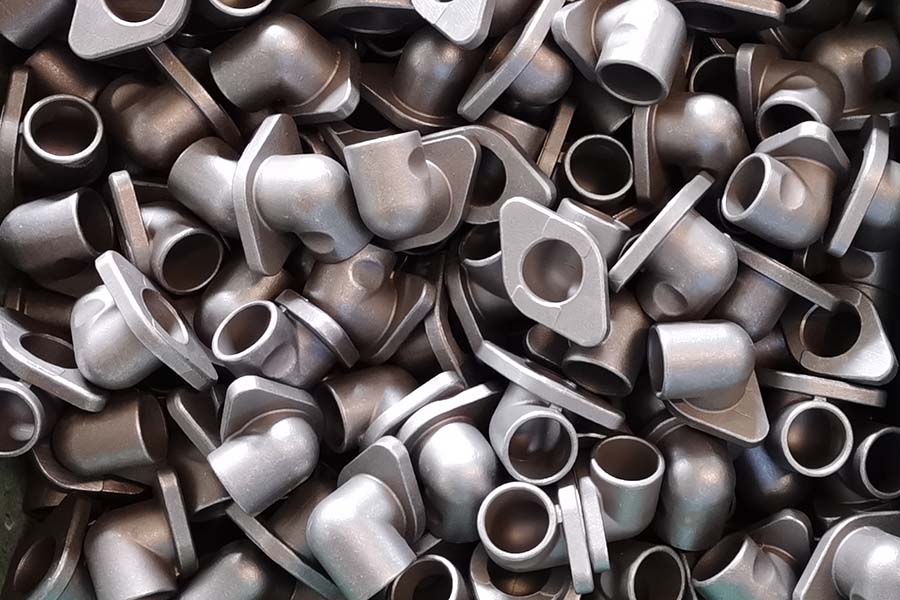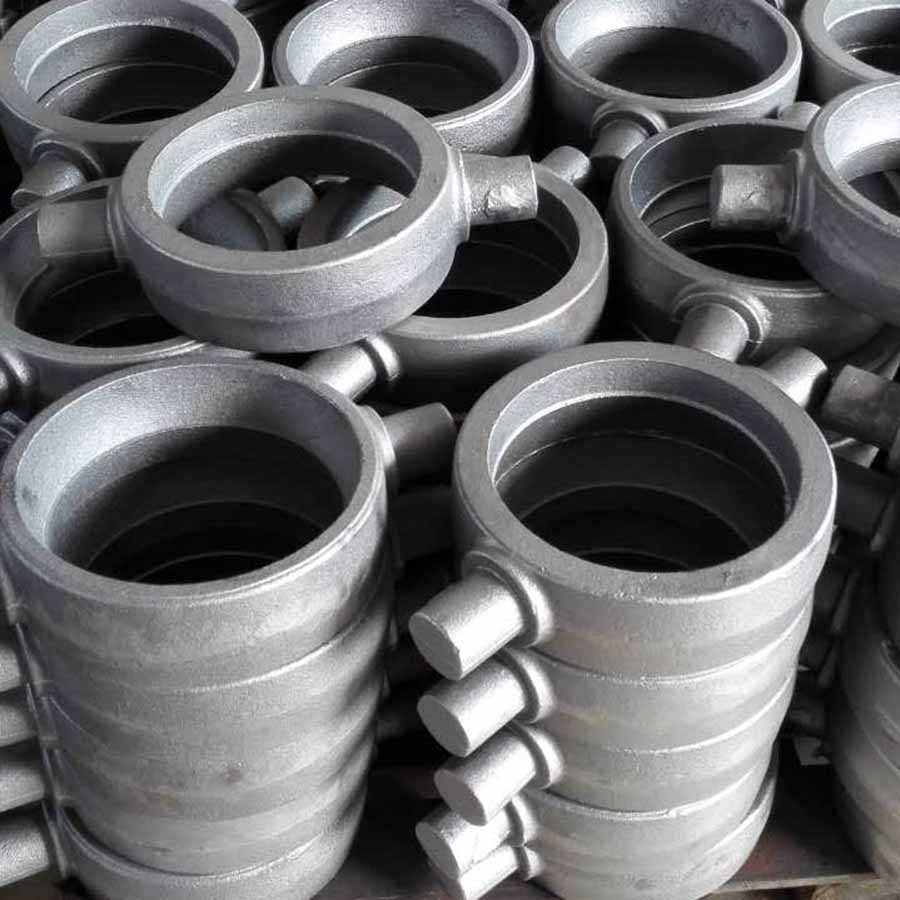- Quantity of the material required
- Design of the part
- Tolerances required
- Metal specification
- Surface finish required
- Tooling costs
- Economics of machining versus process costs
- Delivery requirements
Forging
Forging is a manufacturing process where metal is shaped by plastic deformation under great pressure into high strength parts. Forging or cold forming are metalforming processes. There is no melting and consequent solidification involved. Plastic deformation produces an increase in the number of dislocations resulting in a higher state of internal stress. Indeed, strain hardening is attributed to the interaction of dislocations with other dislocations and other barriers (such as grain boundaries). Simultaneously, the shape of primary crystals (dendrites) changes after plastic working of the metal. Dendrites are stretched in the direction of metal flow and thus form fibers of increased strength along the direction of flow.
We may distinguish hot working from cold working. Hot working is performed above the recrystallization temperature; cold-working is performed below it. In hot working strain hardening and distorted grain structure are very rapidly eliminated by the formation of new strain-free grains as the result of recrystallization. Rapid diffusion at hot working temperatures aids in homogenizing the preform. Initial porosity can also be significantly reduced, eventually completely healed.
Metallurgical phenomena such as strain hardening and recrystallization are important because these changes in structure result in an increase in ductility and toughness over the cast state.
Casting
The casting process consists of pouring or injecting molten metal into a mold containing a cavity with the desired shape of the casting. Metal casting processes can be classified either by the type of mold or by the pressure used to fill the mold with liquid metal. Casting is a solidification process. Therefore, the microstructure can be finely tuned, such as grain structure, phase transformations and precipitation. However, defects such as shrinkage porosity, cracks and segregation are also intimately linked to solidification. These defects can lead to lower mechanical properties. A subsequent heat treatment is often required to reduce residual stresses and optimize mechanical properties.
Strength of forging:
- Good Mechanical properties (yield strength, ductility, toughness)
- Reliability (used for critical parts)
- No liquid metal treatment
Weakness of forging:
- Defects
- Laps
- Die unfill
- Die failure
- Piping
- Shape limited when undercuts or cored sections are required
- Overall cost usually higher than casting
- Multiple steps often required
Strength of casting:
- Large and complex parts
- High production rate
- Design flexibility
Weakness of casting:
- Defects
- Shrinkage porosity
- Metallic projections
- Cracks, hot tearing, cold shuts
- Laps, oxides
- Misruns, insufficient volume
- Inclusions
- Requires close process control and inspections (porosity may occur)
Typical Investment Casting Components:

Typical Precision Forging Components:

An important thing to keep in mind is that quality of materials and heat treating may be a more important factor than casting vs. forging in some cases.
 русский
русский



